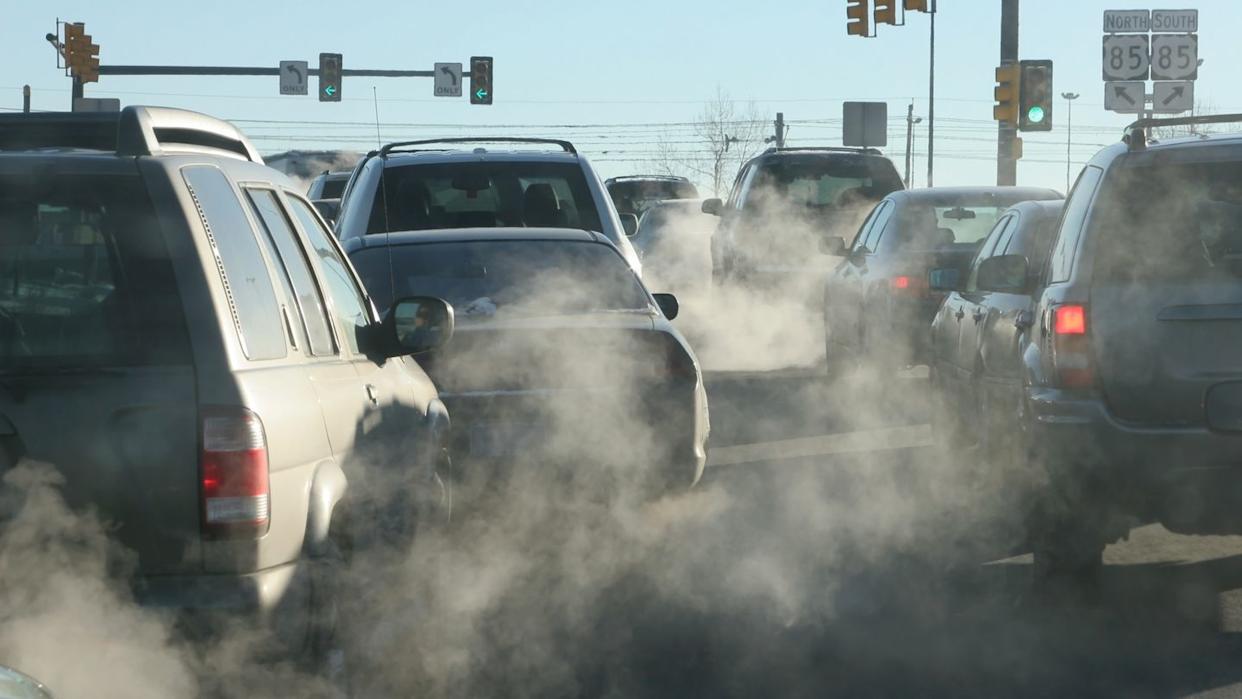
"Hearst Magazines and Yahoo may earn commission or revenue on some items through these links."
Here’s what you’ll learn reading this story.
The EPA has announced plans to rescind its 2009 declaration that identified greenhouse gases a threat to human health and wellbeing.
Several major automakers are working on synthetic fuels that could allow internal combustion engines to achieve near-carbon-neutral operation.
The EPA’s final ruling can be challenged in court, should it follow through with rescinding the endangerment finding.
Climate change has been one of the most divisive political talking points for decades, but it’s recently been brought into even sharper focus. Lee Zeldin, the administrator of the EPA, announced plans to rescind the agency’s 2009 landmark declaration known as the Endangerment Finding, which states that greenhouse gases pose a threat to public health and the wellbeing of current and future generations. His argument claims the declaration is based on outdated science, and therefore imposes unnecessarily stringent regulations. This ruling is the bedrock for much of the EPA’s work in regulating emissions, including the Clean Air Act.
Unsurprisingly, Zeldin’s proposition is facing significant opposition, and will likely face a litany of legal challenges.
Why?
Simply put, there is tension between the environmental and economic impact of green legislation. When Zeldin announced the proposal back in March, he said that rescinding this finding would be akin to “driving a dagger straight into the heart of the climate change religion” and would “drive down cost of living for American families, unleash American energy, bring auto jobs back to the U.S. and more. ”
The endangerment finding has been a political game-piece for implementing—and removing—policy linked to climate change basically since its announcement. And that’s a sobering thought coming off the hottest year ever recorded on earth, paired with a barrage of natural disasters with rising intensity and frequency.
I’m not afraid to admit that I’m a car enthusiast myself who loves to hear the sound of an internal-combustion engine working. However, we have to face the fact that climate change is real and be proactive with how we approach the future. Porsche is one of many trailblazers leading the charge for synthetic fuels—a novel technology that would allow for the near-carbon-neutral operation of internal combustion engines. Just last year, Porsche’s Mobil 1 Supercup racing series ran exclusively on near-carbon-neutral synthetic fuels. We’re still a long way from seeing the technology in road cars, as the fuel is currently just too expensive to be practical for most drivers, but we’re moving in the right direction.
Auto Industry Impacts?
Currently, we can only speculate about the impact this decision will have on the automotive industry. What we do know is that, in a perfect world, automakers would prefer stability and predictability. So, if you’re thinking that an upending of emissions regulations will cause an end to, say, the production of electric vehicles, you might want to think again.
According to a recent article in The New York Times, Ford, GM, and Stellantis have spent an estimated $146 billion developing and producing electric vehicles. In fact, most manufacturers outside of Tesla are still selling EVs at a loss to recoup their initial investment in the technology. Selling these vehicles at scale helps accelerate the time it takes to break even, which is likely why the bean counters at many U.S. brands are sweating this decision quite a bit. The EPA’s potential decision could also play a significant role in our ability to compete with Chinese manufacturers, who are already producing exceptional automobiles in greater numbers than even Tesla can manage.
That said, reversing the finding would remove much of the federal government’s capability to keep automakers from emitting as much greenhouse gas as they wanted while making those cars. Many companies already have procedures in place to mitigate those emissions, however, so it’s unclear if it would be worth the time and money for them to reverse course.
What Happens Next?

We should note that the EPA’s proposal is not a done deal, and still needs to go through the necessary red tape before being implemented. The formal rule-making process begins with a public comment period, where citizens and stakeholders will be able to provide input and voice concerns. It’s very unlikely that this will turn the tide of the EPA’s decision-making process, but there are still options that remain. For example, the final ruling can be challenged in court by those who disagree—which, let’s be honest, will likely be a considerable number of people.
Although the endangerment finding was announced in 2009, by 2025, we have accumulated over 15 years of environmental science that supports it. Regardless of whether or not it is stricken from official record, it will not change the fact that continued un- and under-regulated climate emissions are bad for human health and wellbeing. All we can do now is wait and see if U.S. law will continue to follow scientific guidance.
You Might Also Like








Comments